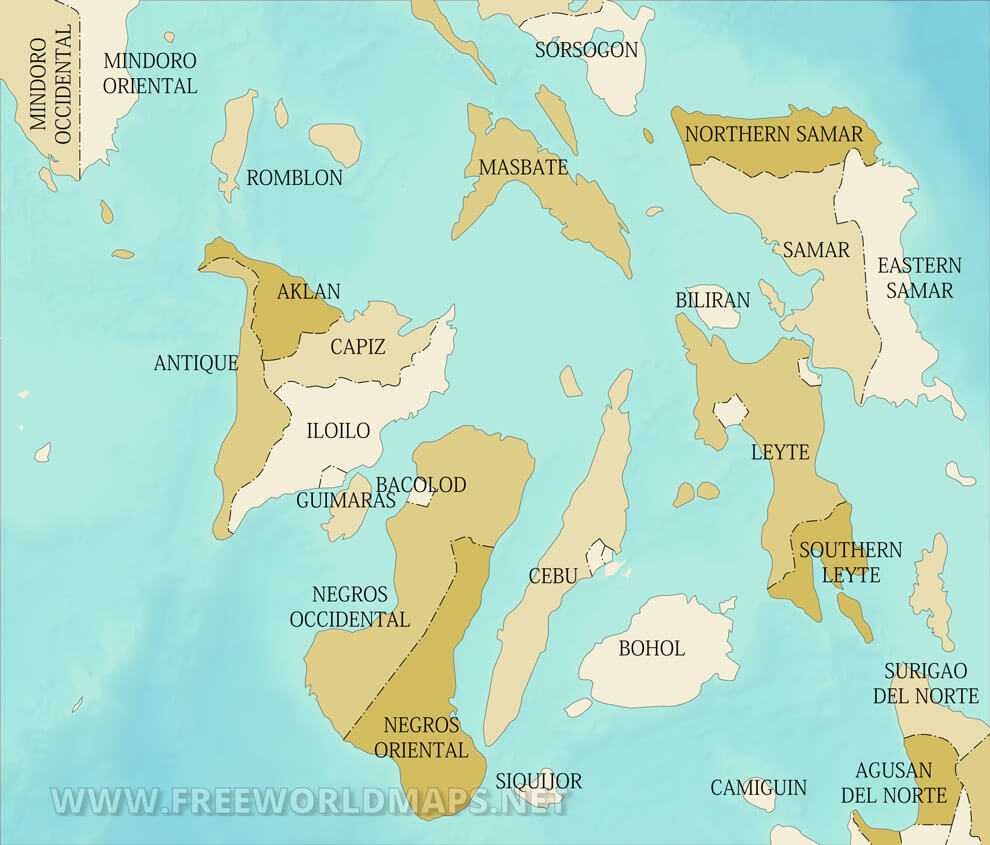Visayas Island Group:
The Visayas is one of the three principal geographical divisions of the Philippines, alongside Luzon and Mindanao. Located in the central part of the country, the Visayas is composed of several islands that are known for their rich history, vibrant culture, and stunning natural beauty.
Geography
The Visayas is made up of several major islands and numerous smaller ones. The main islands include:
- Panay
- Negros
- Cebu
- Bohol
- Leyte
- Samar
- Guimaras
These islands are grouped into three administrative regions:
- Western Visayas (Region VI) – includes Iloilo, Aklan, Antique, Capiz, Guimaras, and Negros Occidental
- Central Visayas (Region VII) – includes Cebu, Bohol, Negros Oriental, and Siquijor
- Eastern Visayas (Region VIII) – includes Leyte, Samar, Biliran, Southern Leyte, Northern Samar, and Eastern Samar
Culture and Language
The Visayas is known for its warm and hospitable people. It has a diverse linguistic landscape, with the following being the most widely spoken languages:
- Cebuano – the most commonly spoken language in the Visayas
- Hiligaynon (Ilonggo) – spoken mainly in Western Visayas
- Waray-Waray – dominant in Eastern Visayas
These languages are often mixed with Tagalog and English, which are also widely understood and spoken across the region.
The region is also home to vibrant festivals such as:
- Sinulog Festival (Cebu)
- Ati-Atihan Festival (Aklan)
- Dinagyang Festival (Iloilo)
- Pintados Festival (Leyte)
These festivals are characterized by colorful costumes, street dancing, music, and religious devotion, especially in celebration of the Santo Niño (Holy Child).
Economy
The economy of the Visayas is diverse and largely dependent on:
- Agriculture – sugarcane, rice, coconut, and fishery products
- Tourism – white-sand beaches, diving spots, and cultural heritage sites attract both local and foreign tourists
- Business Process Outsourcing (BPO) – especially in cities like Cebu and Iloilo
- Shipping and Trade – due to its strategic central location
Tourist Attractions
The Visayas boasts numerous popular destinations:
- Boracay Island (Aklan) – known for its powdery white sand beaches
- Chocolate Hills (Bohol) – a geological wonder
- Magellan’s Cross and Basilica del Santo Niño (Cebu) – significant historical and religious sites
- Kalanggaman Island (Leyte) – known for its sandbar and crystal-clear waters
- Sambawan Island (Biliran) – famous for its scenic landscape
Conclusion
The Visayas Island Group is a dynamic region that plays a vital role in the Philippines’ culture, economy, and tourism. Its diverse people, breathtaking sceneries, and rich heritage make it an essential part of the nation’s identity.
| Region # | Region Name: | Regional Center: | Pop. (2020): | Area (sq. km.): | Area (sq. mi.): | Provinces: | Ind. Cities: | Comp. Cities: | Municipalities: | Barangays: | # Island Brys: |
|---|---|---|---|---|---|---|---|---|---|---|---|
| 6 | Western Visayas | Bacolod, Negros Occidental | 7,954,723 | 20,794.18 | 8,028.69 | 6 | 2 | 14 | 117 | 4,051 | 188 |
| 7 | Central Visayas | Cebu City, Cebu | 8,081,988 | 15,885.97 | 6,133.60 | 4 | 3 | 13 | 116 | 3,003 | 384 |
| 8 | Eastern Visayas | Tacloban, Leyte | 4,547,150 | 23,251.10 | 8,977.30 | 6 | 1 | 7 | 136 | 4,390 | 487 |
| Pop. (2020): | Area (sq. km.): | Area (sq. mi.): | Provinces: | Ind. Cities: | Comp. Cities: | Municipalities: | Barangays: | # Island Brys: | |||
| Totals: | 20,583,861 | 39,137.07 | 14,162.29 | 16 | 6 | 34 | 369 | 11,444 | 1,059 |

Map by www.freeworldmaps.net